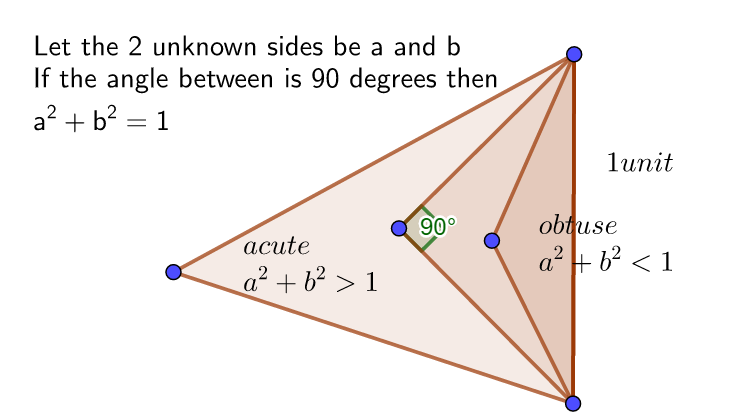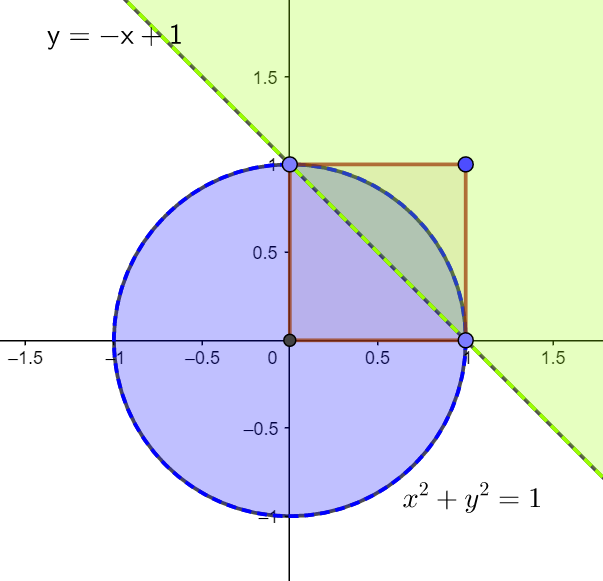Randy presses RAND on his calculator twice to obtain two random numbers between 0 and 1. Let p be the probability that these two numbers and 1 form the sides of an obtuse triangle. Find 4p.
If I draw a square that is 1 by 1 unit. Then every possible outcome is represented inside that square.
I mean (x,y) in tha square will represent every possible combination of the 2 random numbers.
x is one of the numbers and y is the other one.
Now I need to determine what restrictions will make this true.
Since both these numbers are between 0 and 1 it follows that 1 must be the longest side of the triangle.
Condition 1 For it to be a triangle at all, the 2 random numbers must add to more than 1
then x+y>1
y>-x+1
I have to graph that region.
Condition 2 For it to be an obtuse angled triangle x^2 +y^2 must be less than
See the pic below to try and understand why this is true.

So \(x^2+y^2<1\)
I'll graph that too.
So here is my probability contour graph.

The entire sample space, (that is all possible outcomes) are in the 1 by 1 square.
The green area represents all the points that could make any triangle. with the other long side being 1
The purple area represents all the points that would NOT make an acute angled triange.
So I need to work out the are of the intersection.
\(Area = \frac{\pi r^2}{4}-0.5*1*1\\ Area = \frac{\pi}{4}-0.5\\ Area = \frac{\pi-2}{4}\;units \;squared\\\)
Since the are of the sample space is 1*1=1
The probabilty that I will be able to form the triangle described is
\(P (\text{That an obtuse angle with 3rd side equal 1 can be formed})=\displaystyle \frac{\pi-2}{4}\)
OH this is not quite what the question asked .. You can finish it. 
.